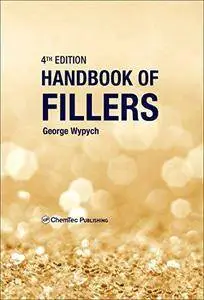Handbook of Fillers (4th edition) By George Wypych
2015 | 940 Pages | ISBN: 1895198917 | PDF | 131 MB
2015 | 940 Pages | ISBN: 1895198917 | PDF | 131 MB
This handbook gives direct comparison of general purpose fillers (micron-size fillers) and nanofillers. Over 4,000 research papers, mostly published from 1994 to 2015 (over 1000 new papers in this edition), technical data from over 200 filler and equipment manufacturing companies, and patent literature were reviewed for this comprehensive handbook. The book is designed to be single source of information for an experienced practitioner as well as a reference text for students and those new to the fields where fillers are used. The previous editions, used by very large number of readers, does not contain essential developments of extensive research on fillers in the last 10 years, especially related to nanofillers, graphene and other novelty products. Fillers, in most applications, are no longer used as cost-saving additives but they add value to final products, and many products cannot be successfully designed without them. This reference book is a powerful tool for today's challenges, which can only be met by those equipped with extensive information. The book provides the information on three groups of relevant topics: available fillers and their properties, their effect on filled materials, and their use in practical applications. One third of the book covers the grades of fillers available in the world market. Fillers are divided into 83 groups and their properties are analyzed to pinpoint properties, applications, and sources. The technical information is a synthesis of information on several thousand grades of fillers manufactured today. The morphology of fillers, in addition to the numerical and other data, is illustrated by over 200 SEM TEM, AFM micrographs. The second part of the handbook discusses the effects of filler incorporation. Ten chapters cover the mechanical properties of compounded materials, the effect of the filler on material rheology, the morphology of the filled system, the material durability, flammability and recycling, the structure of interphase, chemical interactions, interaction with and effect on other additives, fillers use in material combinations, and the analytical methods of testing fillers and filled materials. The last part of the book is concerned with application of fillers on an industrial scale. Several chapters discuss filler transportation, storage, processing and equipment used for these purposes. Others deal with the quality control of fillers, formulation with fillers, different processing methods, groups of products, and health and safety issues. This part is designed to assist industrial engineers to evaluate advances in the processing technology. It is also invaluable for chemists who design formulations for industrial processes and students in chemical engineering who must learn how modern industry operates in practical applications. The handbook is invaluable for sales and marketing because it gives possibility of direct comparison of fillers and their potential use and contains all required information to position them in the marketplace. To summarize, major features of this handbook are: • Comprehensive review of literature • The most current information • Information required by scientists, engineers, marketing, sales, and students given in one source • All aspects of filler properties, effects, and application thoroughly reviewed • Contains all available information to make decision on what can be done by traditional fillers and where nanotechnology excels



